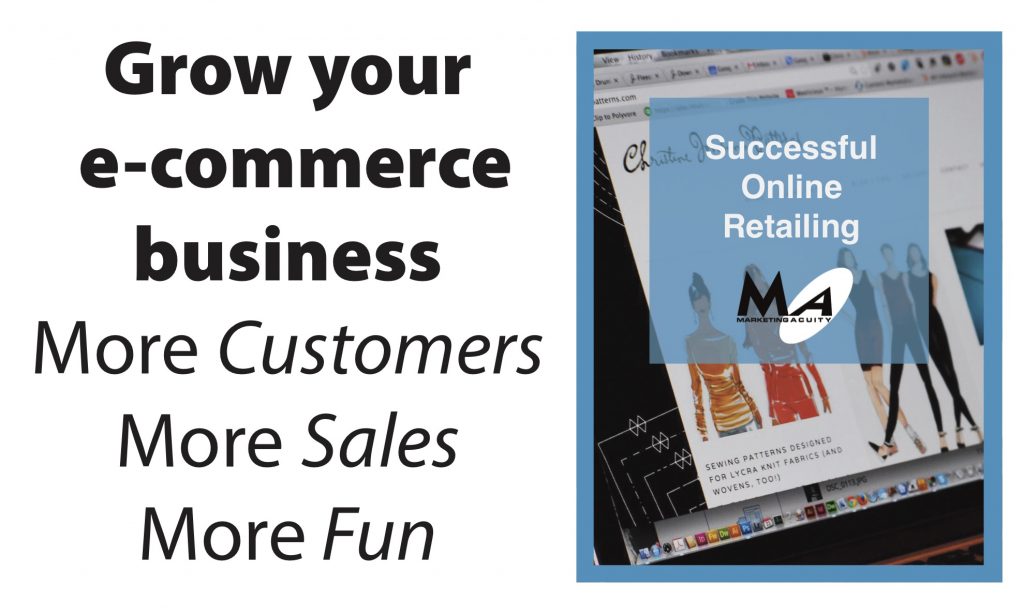The other day, during a blogging boot camp session with a client, we were working with some top web tools for small e-commerce businesses when first her phone, and then my phone both erupted with ‘cha-ching!’ noises. After the third ‘cha-ching!’ we both laughed and our discussion turned to top web tools for small e-commerce businesses that make that whole ‘cha-ching’ thing work.
Our client was utilizing SquareSpace.com for her commerce web site, and upon notification of both a sale from SquareSpace and a sale from Etsy, her phone emitted the cha-ching sound. But if you take a big step backward, and explore how she came to use SquareSpace, it’s a lesson in understanding what you and your business needs to succeed first.
In her case, she started with WordPress (also a platform that works well, especially paired with a commerce app like WooCommerce, or one-click PayPal button integration.) She found WordPress to be a difficult to use platform and actually abandoned it (before we met, with another developer). This was very interesting, as WordPress is lauded as one of the easiest to use platforms out there. When clients evaluate web site tools to build their businesses, usually their requirements and technical skillset determines what is the best fit for them. There are no overwhelming tenets like “WordPress is the best platform” – there are zillions of platforms, and a few that stand head and shoulders above the rest, but the BEST platform is the one that is a best-fit for a client’s budget, talent and intended investment in learning.
She evaluated SquareSpace, with it’s integrated commerce, slick editing interface and nearly maintenance-free SaaS system and found it the best web tool for HER small business. Other clients have also come to this decision after a careful evaluation and exploration of their organizations’ need and requirement. But it’s been a platform that has not been a best-fit for other clients, because their requirements were for elements that went beyond SquareSpace’s feature set.
In this client’s case, she uses two commerce or marketplace systems (not a problem, since her inventory is entirely digital), Etsy and SquareSpace. Both offer her the ability to showcase and sell her products online. Etsy and SquareSpace go ‘cha-ching!’ when she sells something. Etsy offers her a global marketplace that are widely respected in the craft/DIY/creator space. SquareSpace offers her an owned-media platform that is hers to manage as she needs to.
When my phone went ‘cha-ching’ – it did so from a PayPal integration with WordPress that offers one-click access to buttons in PayPal (or easy creation of them from within WordPress). This solution works well for a business that doesn’t have a large number of products to manage. It’s not a database-driven commerce system with a lot of products, but rather allows a rich page of information related to the product to have a shopping cart system embedded into it. PayPal’s notification system (that ‘cha-ching’) alerts our team that a new order has come in, so that we may fulfill it. PayPal also alerts when clients pay their invoices using the payment provider’s gateway. We accept credit cards in our business via PayPal (there is a fee for our business to do this, but we consider the convenience for the client to be worth the expense of providing it.)
Here is our short and highly opinionated list of e-commerce systems we love for small e-commerce businesses:
- WordPress with integrated PayPal button tools (such as Easy Paypal Buttons)
- WordPress with WooCommerce tools (available as standalone plugin)
- SquareSpace commerce (with Stripe and PayPal payment gateways)
- Etsy (marketplace)
- Ebay (using PayPal’s payment gateway)
As for ‘cha-ching’ at our blogging boot camp lunch session, we had a chance to explore how building out her marketing strategy and developing a tactical plan would enable her to keep the ‘cha-ching’ and even accelerate it. And that is a great sound to hear for any small e-commerce business.
Want to know what might be the best tools for your small e-commerce business? Schedule a free marketing assessment and we’ll walk through your current setup, help you develop a wish list for future development and zero in on what platforms might be perfect for you.




